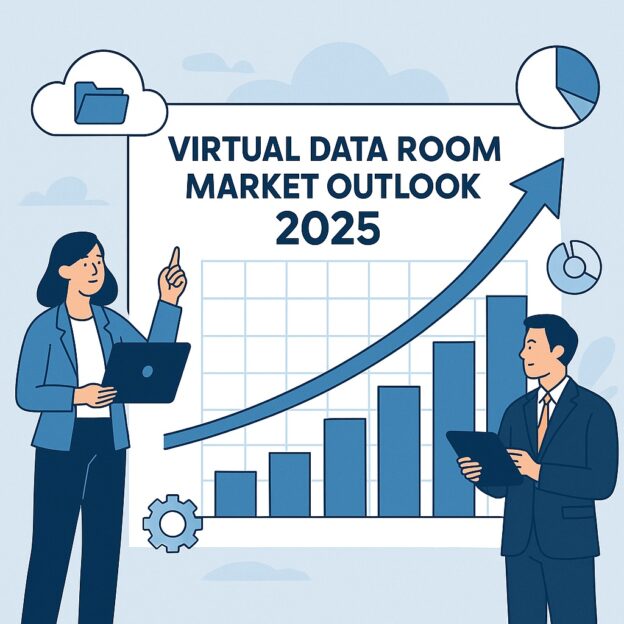The virtual data room market is starting a new chapter in 2025 — one that features specialization, AI integration, and regional compliance needs. As M&A activity increases following a time of careful capital use, the worldwide demand for secure, scalable, and easy-to-use data room platforms keeps growing.
Data rooms have become a must-have for business deals, not just a nice-to-have. But what buyers are looking for in 2025 has changed. They don’t want simple storage anymore. They want systems that work well with other tools automate tasks , and follow strict rules across different countries.
Market Size and Growth Trajectory
The world’s virtual data room market was worth about $2.1 billion in 2023. It’s expected to grow to over $4 billion by 2028 increasing by more than 14% each year, based on Statista’s predictions.
Five main areas are making this growth happen:
-
Mergers and acquisitions (mid-market cross-border deals)
-
Private equity and venture capital
-
Life sciences (clinical trials and IP licensing)
-
Legal and compliance audits
-
Real estate transactions and asset management
Each case shows a need to control access in detail, work together in real-time, and be ready for audits. This shapes the demand. Cloud infrastructure investments and more SaaS use in old-school industries also help the market grow.
Regional Trends and Local Compliance Pressure
North America, with U.S. legal and financial firms leading still has the biggest market for VDR solutions. But Europe and Asia-Pacific are catching up fast. This is because of laws about where data can be stored and rules specific to certain sectors.
In the EU, GDPR has an influence on making hosted VDRs a must for cross-border M&A. In India recent changes to digital personal data protection and FDI rules have led to increased checks during due diligence. This makes compliant data rooms crucial, not just helpful.
Support for local languages, hosting data in specific regions, and certifications like ISO/IEC 27001 SOC 2, and industry-specific approvals will keep setting top providers apart from basic platforms.
Changing Buyer Priorities in 2025
While cost and security are still key, decision-makers in 2025 focus on:
-
Integration readiness: VDRs connect with existing CRM, contract management, and analytics platforms
-
AI capabilities: Tools to redact, auto-index, gain user behavior insights, and score deal-readiness
-
User simplicity: Clean interfaces that need minimal training and have easy-to-set-up permissions
-
Scalability: Can handle multiple projects users who speak different languages, and ongoing deal cycles at once
Private equity firms and law firms that manage several transactions at the same time are pushing for multi-project dashboards and reports they can customize.
What to Expect from Leading VDR Providers
Top VDR providers will broaden their services beyond simple file storage. Key features such as built-in NDAs changing watermarks, document expiry management, and organized Q&A will become standard. Companies that turn into complete transaction support platforms – offering pre-due diligence prep, deal tracking, and links to e-signing and compliance tools – will dominate the market.
As rivalry grows, providers with proven data security systems and region-specific benefits (like EU-based hosting or India-based customer support) will capture more of the local markets.

